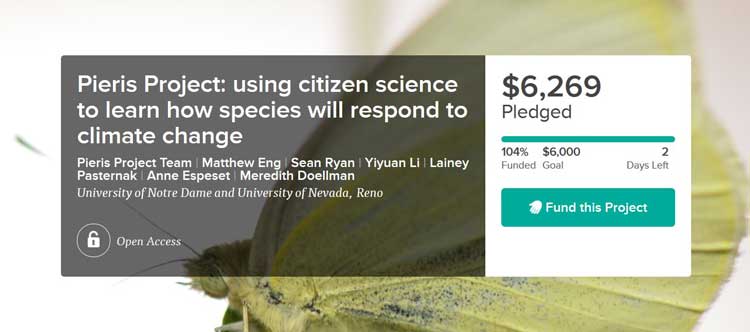Insects account for some of the most successful species on earth, and the success of humans has undoubtedly had a large impact on the structure and diversity of insect populations. Trends such as urbanization, agriculture, and climate change have even altered the insects that we typically come in contact with in our backyards, and houses.
Increases in agricultural land use have reduced milkweed plants, where Monarchs lay their eggs, contributing to the steep decline in butterfly populations. Some insects have fared much better, taking advantage of increased human travel and lack of predators. The brown-marmorated stink bug, originally from Eastern Asia, was accidentally introduced into Pennsylvania over a decade ago. Since then, it has spread to at least 24 other states.
A lesser known, and perhaps even more successful invader is the cabbage white butterfly, Piers rapae. Thought to have come from Europe, cabbage whites are now found all over the world and well may be the most widespread and abundant butterfly on earth. They are often right in people’s backyard, meaning nearly everyone has seen them, even if unconsciously.
As their name suggests, cabbage whites have creamy-white wings and a black spot on the forewings, which can be 2-inches in diameter.
The widespread range of this butterfly makes it relatively easy to catch (although you most likely need a net), and a good tool for studying the effect of climate. This past summer, Sean Ryan, Matthew Eng and several other graduate students at the University of Notre Dame and University of Nevada, Reno launched an initiative this summer, called the Pieris Project, to use citizen scientists to collect these butterflies from all over the world. Currently, over 800 butterflies have been sent in from all over the world, including half of states in the US and places as far as Finland and Siberia.
Engaging the public in research has its advantages. The Cornell Lab of Ornithology set up a program called Nest Watch where bird-watching enthusiasts monitor the success of different bird species. Similarly, we believe the best way to create such a comprehensive collection for study is to work with a global community of citizen scientists. Already, we’ve received specimens from at least half of the US states and 8 countries.
The project uses citizen science, scientific research conducted by amateur or nonprofessional scientists. The Pieris Project was founded with the intention of creating a wide-range, long-term, collection of an insect to explore question about invasion biology and species responses to environmental change.
Our overall goal is to create a global community of citizen scientists that help to do meaningful research that contributes to our knowledge. We are engaging the public on a local level, by creating partnerships with regional Lepidoptera or butterfly societies, and school programs in order to accomplish this. In addition, not only is our study crowd-sourced, but it is also crowd-funded. Our recent campaign to raise money for genetic sequencing means that citizens can contribute to science in other ways, and recognize the impact that funding has on research. By partnering with amateur scientists we can not only solve questions about invasion biology and species response to environmental change, but help foster a understanding and appreciation for science and nature.
If you are interested in helping our project succeed, there are three ways that you can help us tremendously:
Send us a couple of butterflies from your backyard. Include the date and lat/long coordinates on the envelope. You can find details at http://www.pierisproject.org. Even though Fall is here, you may be able to catch a few before winter arrives depending on where you live.
Help us spread the word by either sharing our project with those you think might be interested in participating or by letting us know of organizations, schools, or any community that might be interested – email us at [email protected].
Consider donating to our crowd funding campaign on Experiment.com. You can also check out a short video we made about our project. We’ve just reached our goal, but any contributions would greatly allow us to expand the breadth of our study.
Matthew Eng is a PhD candidate in Biological Sciences at the University of Notre Dame.
————











